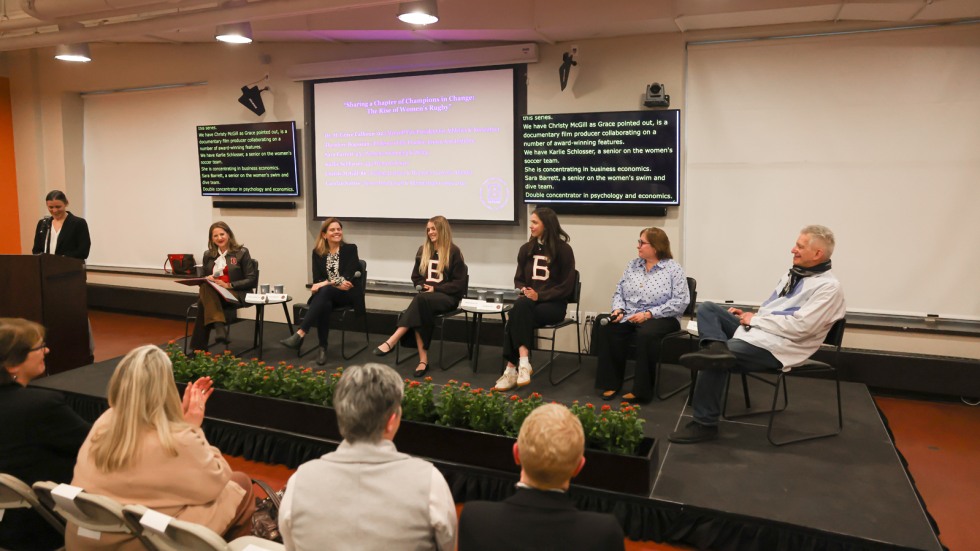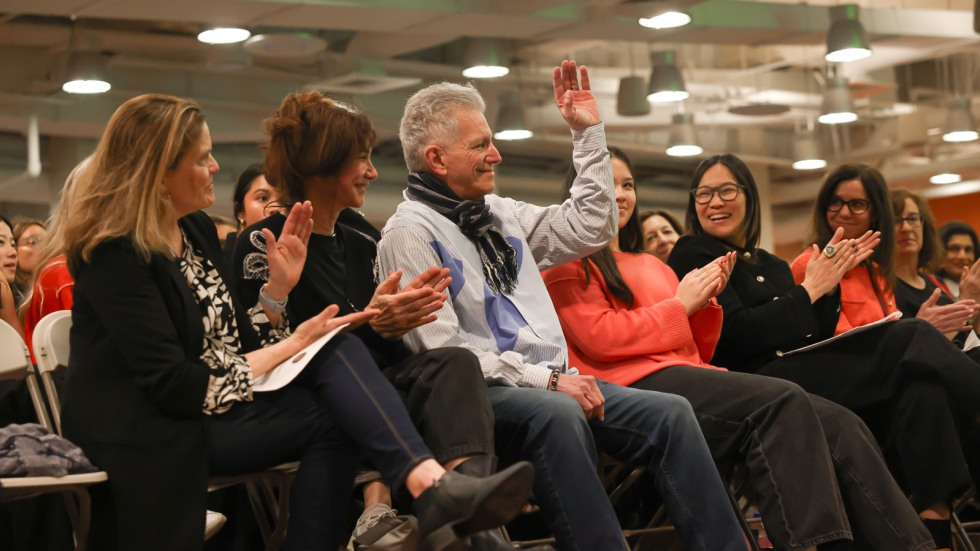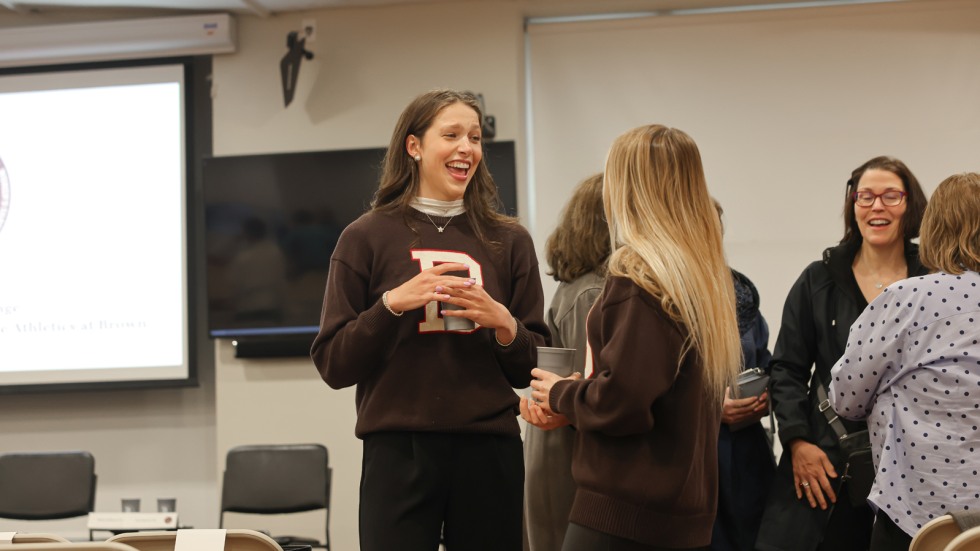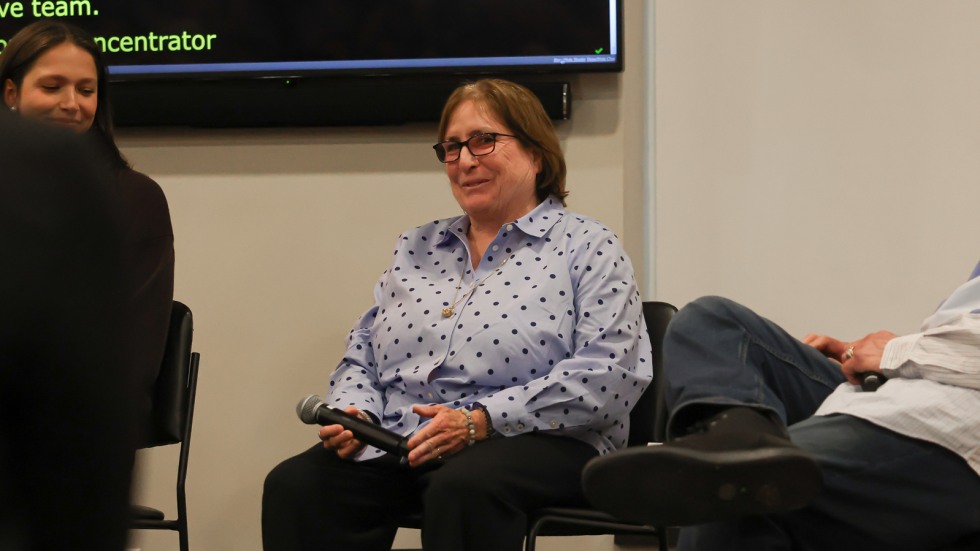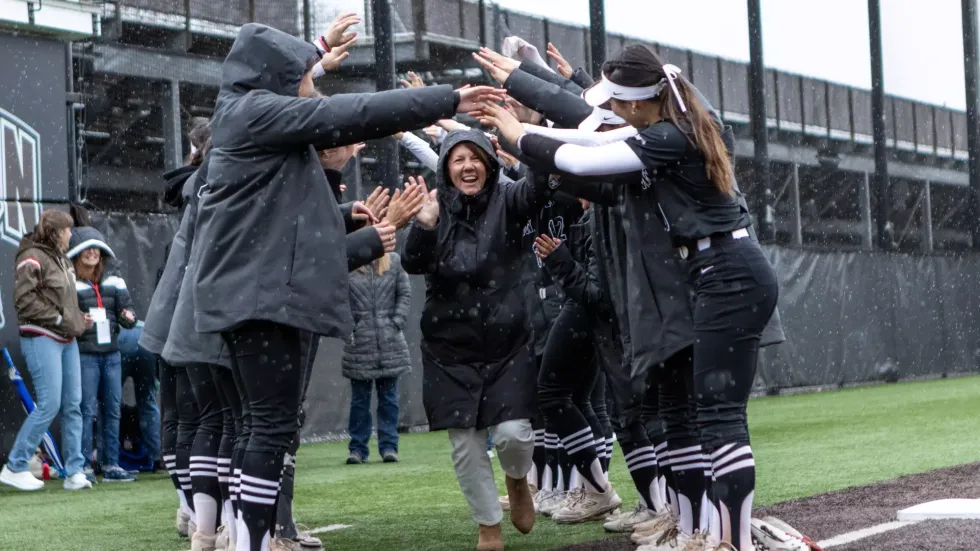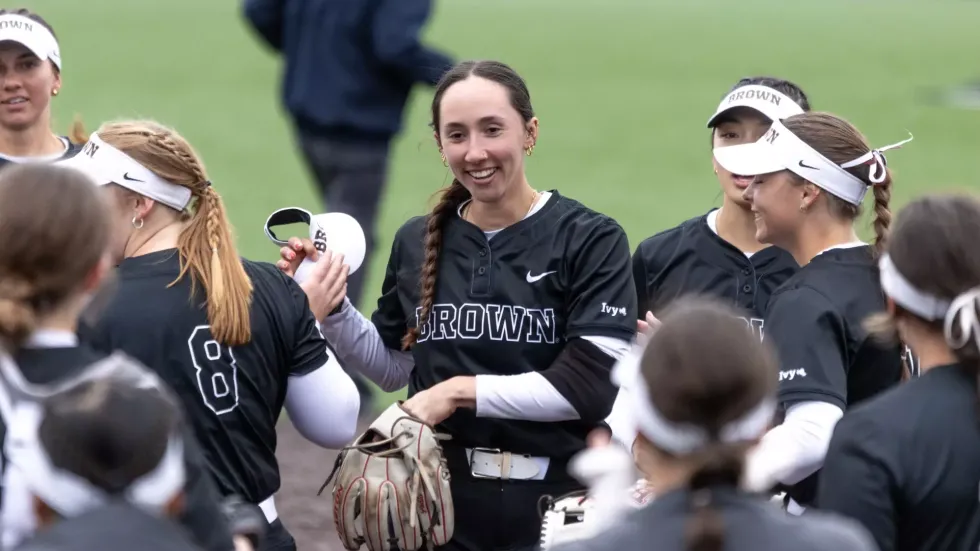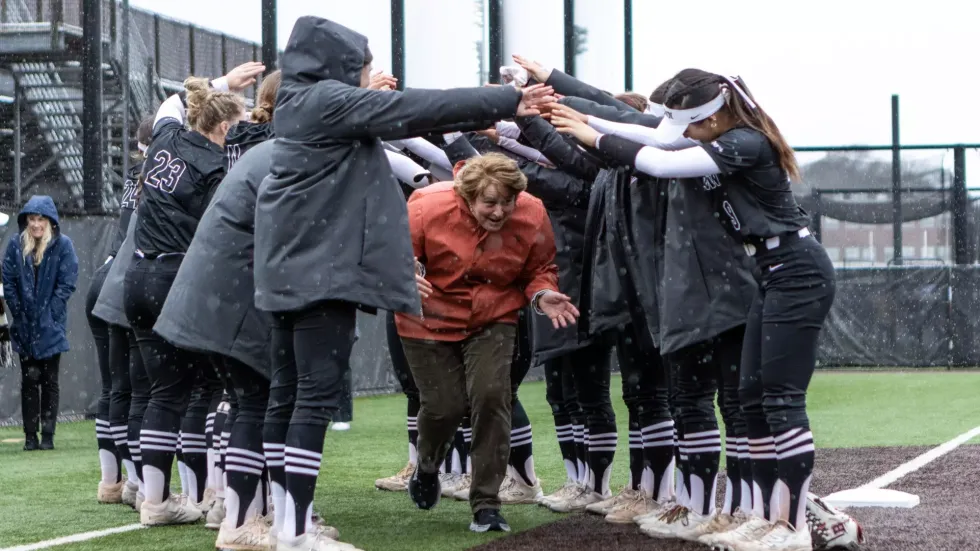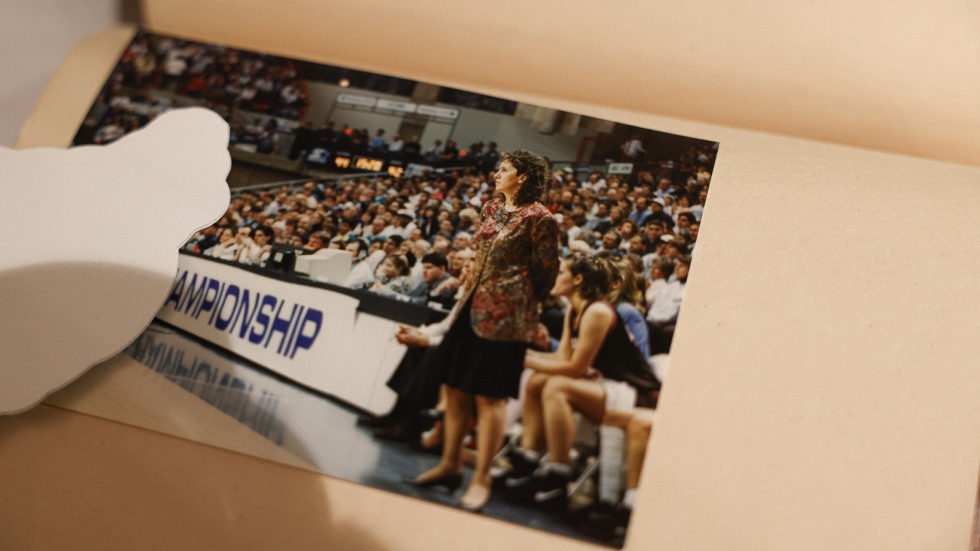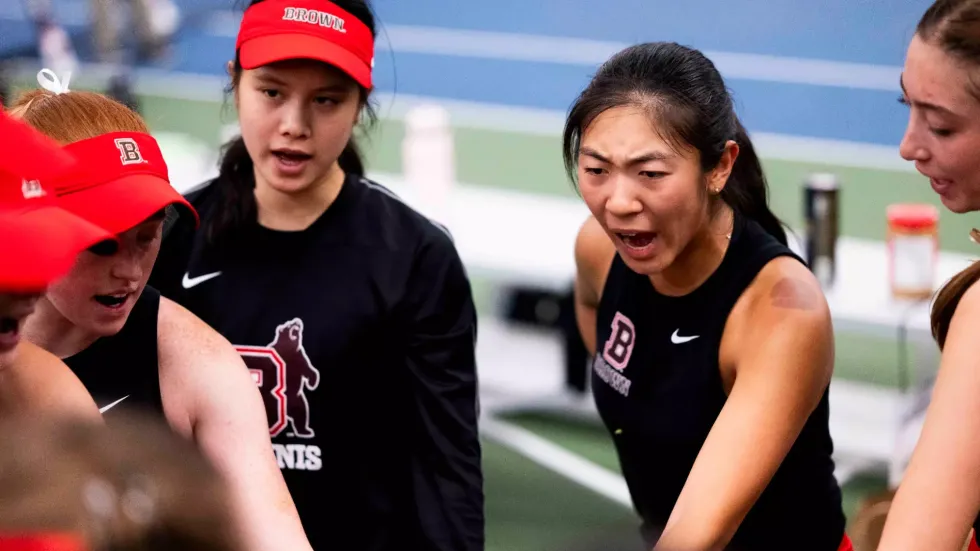The idea for the film, which is tentatively titled “Champions and Change: 50 Years of Women’s Intercollegiate Athletics at Brown,” was born from a conversation during an alumnae dinner with Brown President Christina H. Paxson, Vice President for Athletics and Recreation M. Grace Calhoun recalled during the panel discussion.
“We thought it would be really powerful to tell the story of women’s athletics at Brown through the documentary process, particularly in honor of this 50th anniversary,” Calhoun said.
The project launched in early 2024, when filmmaker and Visiting Assistant Professor of the Practice Teddy Bogosian began leading Brown undergraduates through a series of documentary filmmaking courses in collaboration with the Division of Athletics and Recreation, the Brown Arts Institute and Class of 1986 alumna Christy McGill, a filmmaker who played on the lacrosse team as a student. The project will share the stories of trailblazing athletes, coaches and administrators, and offer reflections from leaders in women’s athletics.
“One of the really fun pieces of Brown female athletics is that they are as important as the male athletics,” said Taylor Virtue, Brown women’s volleyball head coach, in a clip from the documentary that was shown during the screening. “Some of our flagship programs are women’s programs, and it’s been incredible to watch Brown pour resources and support behind female athletics, knowing that this is important. Brown is ahead of the curve.”
During the documentary preview and panel discussion, attendees watched three in-progress chapters of the documentary that highlighted the rise of club rugby, the history of Title IX at Brown in regard to athletics opportunities for women and men, and the achievements of some of the most legendary coaches and players from the last half-century.
“It was really cool to see Brown student-athletes that we know personally featured in the film next to all of these women with incredible legacies,” said senior Sara Barrett, a competitive swimmer who is enrolled in Bogosian’s course this semester. “I have two friends on the swim team who are Olympians, and highlighting them alongside these legends made me realize that they — we — are the next generation of women doing incredible things.”
